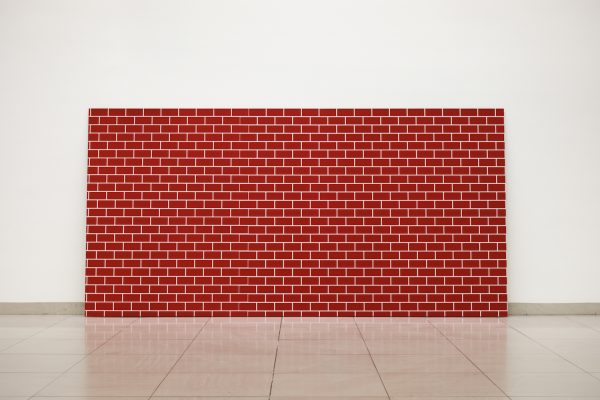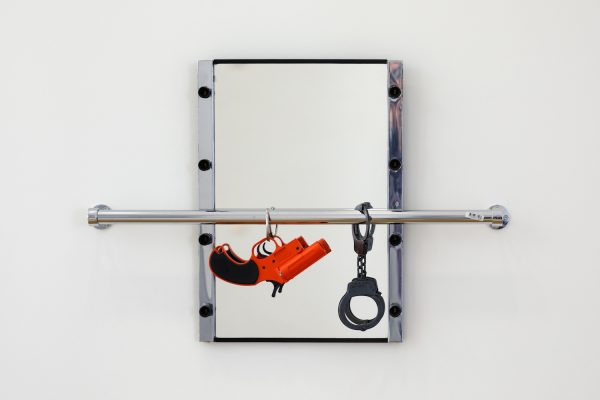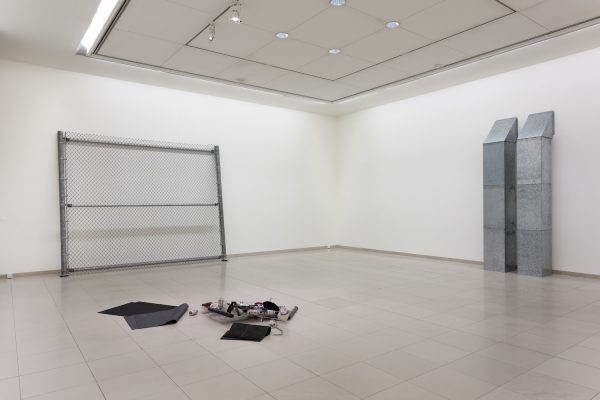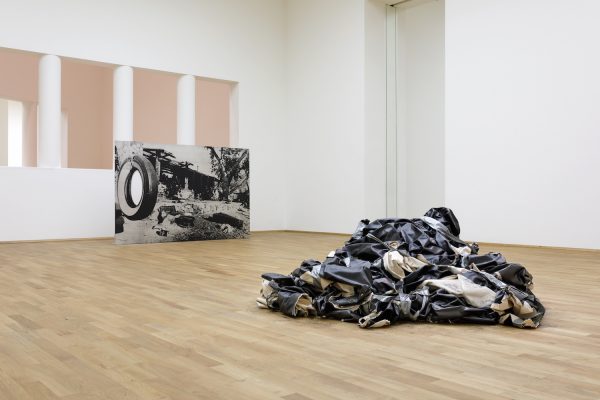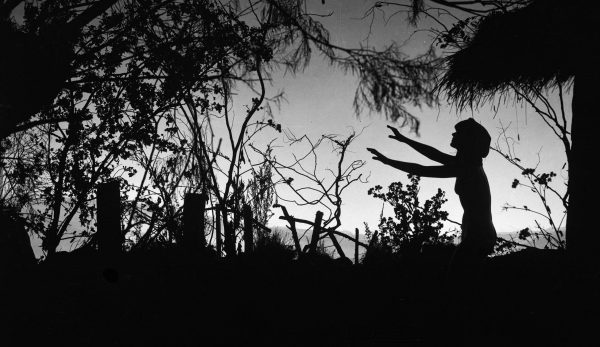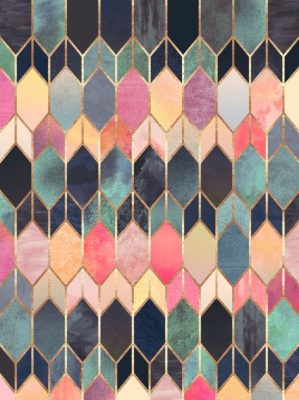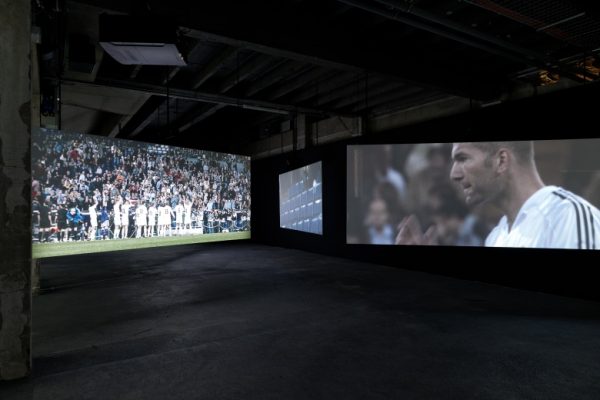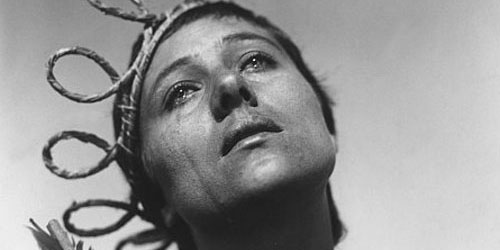During the 1990s, Cady Noland earned a reputation for making sculptural assemblages that toy with iconic symbols of Americana. Her CV lists numerous prestigious exhibitions – the 1991 Whitney Biennial and documenta IX among them – but in 2001, Noland withdrew from public life. Although she rarely shows new work, her name often appears in the context of auction houses. She has made headlines for her work’s record-setting prices, but more often, she has hit the news owing to litigation. Indeed, Noland’s numerous attempts to prevent the sale of her works, arguing they are too damaged, has been interpreted by some as an attempt to destroy her own market. The fact that the artist’s first exhibition in nearly a decade is appearing outside America at the Museum für Moderne Kunst (MMK) in Frankfurt is the latest chapter in a career that seems to rebuke the art world’s conventions at every step.
With the entirety of MMK’s main building devoted to the show, Noland’s retrospective has the feel of a triumphant return. The vast majority of sculptures on view were made between 1987 and 1994, at the height of her career. During that time, she stuck to a narrow set of sculptural strategies, using pipes, brackets, or metal baskets as structures on which to arrange collections of disparate American objects. In Deep Social Space (1989), for example, the aftermath of a barbeque is arranged around metallic scaffolding: beer cans, an American flag, upturned grills, a large container emblazoned with ‘Marlboro’.
In one of her few published texts, Towards a Metalanguage of Evil (1987), Noland elucidates her cataloguing of American material culture. She argues that society functions as a machine-like game, or ‘hero system’, with the figure of the psychopath as the player par excellence. Noland analyses various pieces of popular-culture, from Hitchcock films to self-help books, to argue that America’s obsession with individualist success is transforming its citizens into dangerously manipulative subjects devoid of empathy. For her, everyone from the ambitious artist to market research groups fall under this umbrella.
Over the years, Noland has developed a formalist language that exposes America’s societal violences as something written on its material surfaces. In The Big Shift (1989), mini American flags hang from a scaffold pole beside handcuffs, luggage straps, a metal grate, and insecticide spray – all displayed as potential weapons. There are no secret histories here, no attempts to uncover what lies beneath the object’s pristine surfaces; instead, Noland collects artefacts from daily life and presents them to the viewer just as they are, their inherent violence plainly visible.
Publyck Sculpture (1994) greets viewers as they enter and exit the exhibition. In it, three tyres hang from a metallic wooden frame, attached with link chains. Resembling swings, the tyres invite play, but the austere frame is suggestive of the hangman’s noose, transforming MMK’s main hall into a site for public execution. This merging of entertainment and punishment is echoed in Tower of Terror (1993), a large pillory with holes for three heads, the kind of thing one might encounter at a carnival or a medieval history museum. In Noland’s dystopian vision of modern America, violence is synonymous with amusement. Her works are openly nihilistic and any societal critique is delivered with cool ambivalence. In a world intent on destroying itself, she seems to say, there is nothing left to do but sit back and watch it crumble.
Many of Noland’s works deploy photographs and texts clipped from newspapers and gossip rags. She enlarges these images – photos of the Manson cult, a barefoot Jackie O, and Charlie’s Angels actress Jaclyn Smith, all feature – and prints them on large sheets of reflective aluminum, which are propped up against a wall. Noland draws no distinction between political figures, actresses, and murder cults: all are equal players in the game of exploitation. It’s unclear whether the artists views them as enablers or victims, or both.
As I look at Percussion and Cartridge Revolvers (1984), in which a manual for firearms is nailed to the wall and used as a peg from which to hang handcuffs and a whistle, I can’t help but think of the current crises of police brutality and migrant detention in the US. In an accompanying essay by cultural critic Diedrich Diedrichsen, however, contemporary politics are never explicitly discussed. Perhaps this is with good reason: to associate Noland’s work too explicitly with any specific issue would diminish its power. Instead, it might be best to understand Noland’s sculptures as a rebuke to anyone who considers America’s authoritarian turn as anything but standard practice for the country. Look, Noland seems to say, this was all already here. She accomplishes this analysis less through direct citations of American oppression than through considering its leftovers: broken car-lights and dirtied baseball bats, crushed Budweiser cans and chain-link fences. For Noland, there is no vast conspiracy at work in American life. Her works form a portrait of an openly exploitative society.
